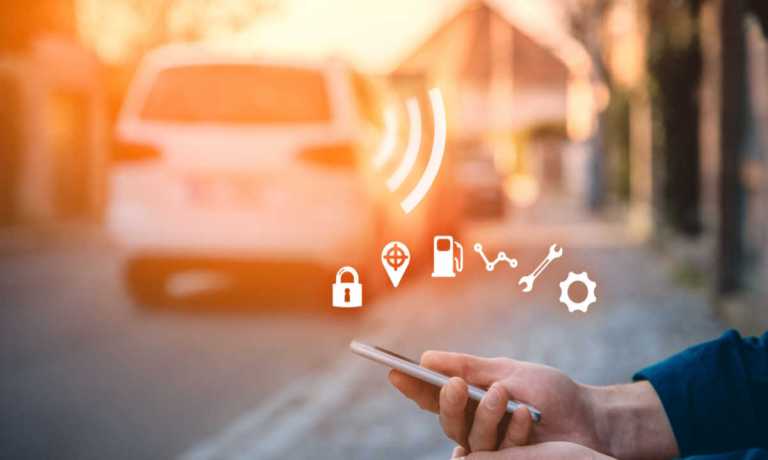Connected Fleets Leave Odometer Checks in the Rearview Mirror

If a business is paid by its customers for the number of miles its vehicles are driven, or if it pays its employees for the number of miles they drive a company vehicle, it’s good to get the mileage directly from the vehicle itself.
Solutions that involve recording the mileage manually could be questioned, and those that use a mobile phone could see the phone move separately from the vehicle.
“That’s what vehicle data brings to the table — people feel that the accuracy is just at the top,” Anders Truelsen, chief revenue officer at Otonomo, told PYMNTS.
Bringing In Data from Vehicles
Connected car data can be used for this and other commercial and business-to-business (B2B) applications. On July 20, Otonomo announced that it has launched an updated app that integrates with Salesforce and helps companies use that platform to monitor and manage anywhere from one to thousands of company-owned vehicles.
By bringing in data from their vehicles, fleet owners can see such things as a list of their vehicles, whether the drivers are hard braking, whether they are accelerating quickly and whether the vehicle’s fuel level and tire pressure are where they should be. They can see this all in one place.
“There was a good need for Salesforce users that are operating some type of fleet to stay in one universe — ‘I’m used to the Salesforce universe for whatever I’m doing, and I want to kind of stay in that universe and also be able to operate and control my vehicles,’” Truelsen said.
Making Reporting Simple, Precise
For the billing and reimbursement processes, data from connected cars can show where the vehicles have gone and how long they were there. With a distance tracking feature, the user can look at trips the vehicles have taken, including such information as the roads that were used, the amount of time the trip took and the share of that time that was spent driving.
“There’s a lot of companies that have people being compensated in terms of the use of their car, how much time they use the car,” Truelsen said. “That’s a very typical system but it’s sometimes complicated to report on and of course there’s also some debate in terms of whether they’ve reported correctly.”
With the app, the data comes directly from the connected car, and it is reported within the Salesforce environment.
“These reports can be used to structure invoices and billing,” Truelsen said. “And if certain employees are paid by distance, the type of information that is provided here can help companies make their own reports much more simple and more precise.”
Deploying Geofencing Capabilities
Another way businesses commonly use connected car data involves geofencing capability. Here, the car data can be used so that the user can learn when a vehicle has entered or exited a geographic area that was defined in the app by the user.
“Let’s say, for instance, you have a certain package you want to be sure is delivered to a certain location,” Truelsen said. “You could do a small geofencing around that location and then when the driver enters into the circle, you will get an alert.”
Similarly, if a manager wants to know when a package leaves, an alert can be set for when the company vehicle that’s carrying it leaves the area.